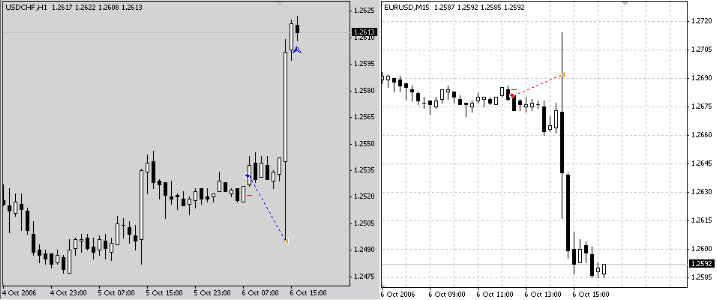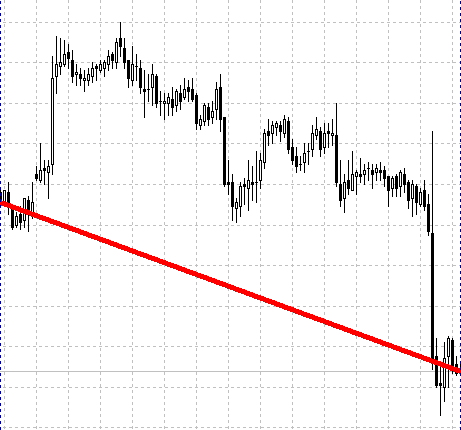Technical Analysis: Make the Impossible Possible!
Victor Chebotariov | 16 August, 2007
Introduction
As we all know, technical analysis is based on market laws, on price movements impacted by fundamental factors. As to me, I mean by "fundamental factors" not only economic situation in one country or another, but also mental conditions of market participants, their thoughts, etc. These factors cannot be estimated or predicted by anybody. The only thing that can consider and considers these factors is price. I noticed repeatedly that market ignored positive fundamental data. Simple indexes cannot make any significant impact on the market. Only price shows us the real situation. This is why we should study its regularities and behavior in order to stay up.
Everybody Faced This
Everybody faced situations where technical analysis turned to be helpless in the market changing at the news time. Below is an example taken from The Automated Trading Championship:

Fig. 1. Market behavior at the news time
In Fig. 1, we can see that even entering in a "fortunate" direction results in losing trades, not to mention that an EA would not be able to predict such an event as in the above chart if the program does not contain the entire economical calendar with predicted data and possible market scenarios. If even something similar were made, the use of this would be rather doubtable.
Why Is Technical Analysis Helpless?
Why is technical analysis helpless if it can give more information at lower costs than fundamental analysis? The answer is in how we try to predict the market behavior, what periods of time we use for this. If we rely on the market behavior during one week, we won't be given a true and fair view. One week, the market may grow (Fig. 2), another one - fall (Fig. 3), the third one - remain practically unchanged (Fig. 4). At that, the fluctuations will look insignificant, almost invisible during larger periods (Fig. 5).

Fig. 2. The week the market was growing

Fig. 3. The week the market was falling

Fig. 4. The week the market was not practically changing

Fig. 5. A weekly chart where we can see how miserable the market movements were within the three weeks
All reasoning above allows us to make the following conclusion: The use of technical analysis of short periods does not give a true and fair view, the market behavior is chaotic and unpredictable during short periods and, therefore, cannot result in anything but losses.
Conclusion: The Impossible Is Possible
It is a common knowledge that, coding his or her new trading system, the trader wants it to be profitable. To get what he or she wants, the trader should consider that:
- any news may become a surprise for your trading system if you analyze the market on short periods of time,
- price may get to its "goal" in different ways, but it will surely be there where it must be, and
- not all trading systems successfully used in manual trading will be so successful in automated trading.
To make the impossible possible, one should forget about surplus-profits that can be gained theoretically considering all the least fluctuations at intraday trading having coded a trading system that gives good results in manual trading. A computer may omit many things, you know.
You should better use larger periods of time that don't hide any surprises, such as sharp changes in prices after a news has appeared.